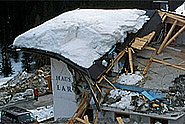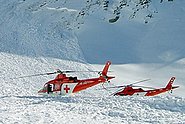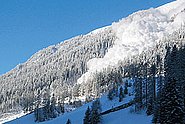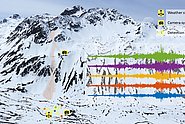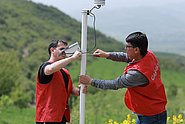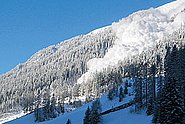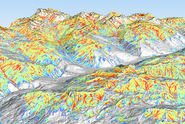
Avalanches and avalanche accidents ¶
We keep a database containing detailed records of avalanche events, including full details of all fatal accidents since 1936/37. This data set is not only an important basis for avalanche hazard maps. It also allows us to analyse long-term trends and thereby assess the effectiveness of prevention measures.
Topics ¶
Services and products ¶
Projects ¶
"Are more and more people falling victim to avalanches? Or have the numbers decreased in recent years?" It isn't just the media and public who want to know about recent trends in avalanche fatalities. Organisations involved in avalanche and accident prevention are also interested in such questions. To answer them, we need the most comprehensive and long-term statistics possible on destructive avalanches and avalanche accidents. In 1998, the SLF began recording in a database all known avalanches since 1936 that caused personal injury or property damage. The very extensive destructive avalanche database, which is without parallel worldwide, now contains 15,000 records. This makes it easier to retrieve and examine accident data.
Selected accidents involving personal injury and property damage are featured in our winter reports. Published since 1936, these reports document accidents and accident statistics, as well as detailing weather and snowpack development and avalanche activity. We also regularly publish statistical analyses of avalanche accidents. Informing the public by means of these analyses, with a view to avalanche prevention, is one of our fundamental objectives.
Investigating authorities and insurers sometimes ask the SLF for expert opinions in the wake of avalanche accidents or cases of injury or damage. We also provide data about snow, wind and temperature or destructive avalanches.
